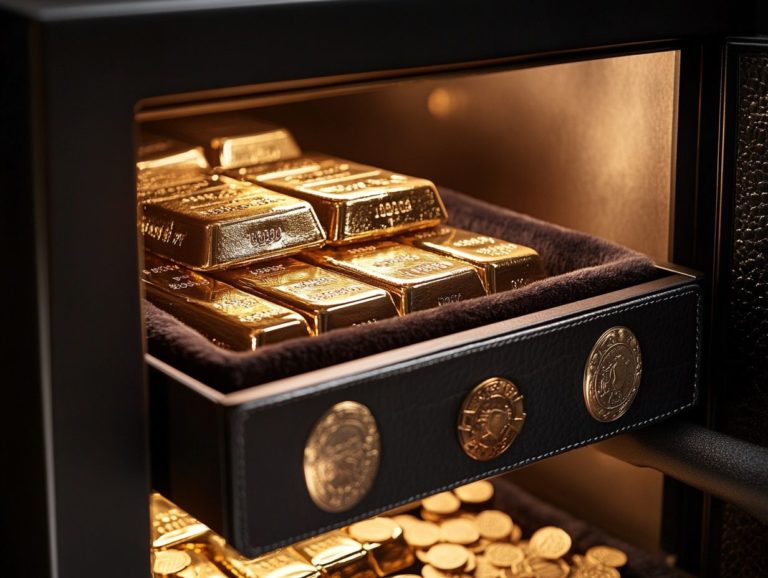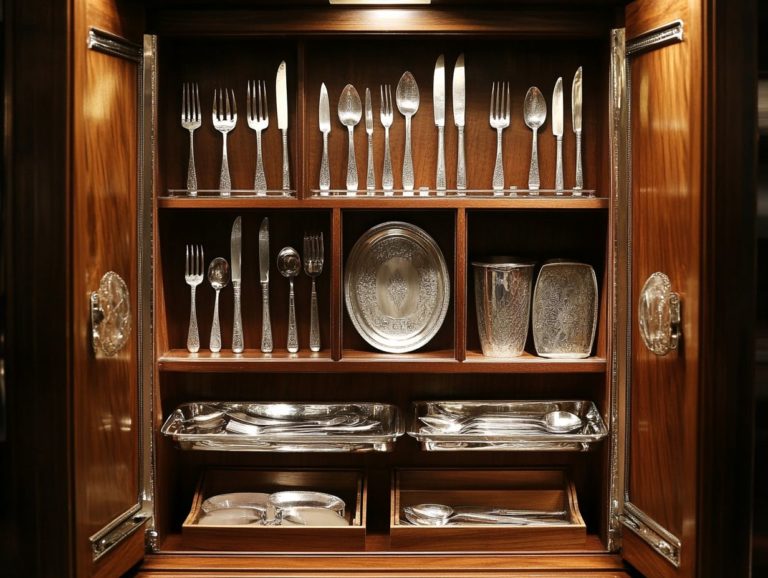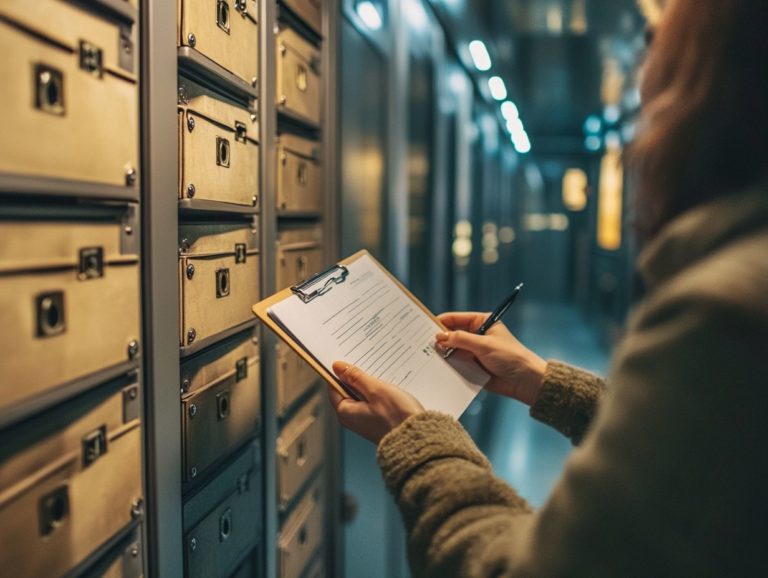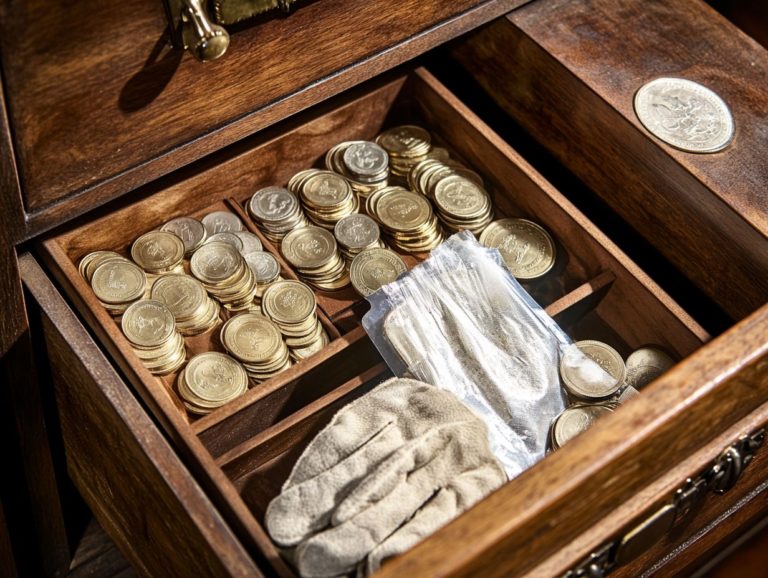5 Tips for Long-Term Silver Storage
Properly storing silver can significantly impact whether it retains its luster or succumbs to tarnish over time. This article presents five essential tips for long-term silver storage that will ensure your treasured pieces remain in pristine condition.
From selecting the ideal container to understanding how air and light affect your silver, you’ll find practical solutions tailored for your needs. Whether you’re a seasoned collector or just starting your silver journey, these insights will empower you to safeguard your silver for many years to come.
Contents
- Key Takeaways:
- 1. Choose the Right Container
- 2. Use Anti-Tarnish Products
- 3. Keep It in a Cool, Dry Place
- 4. Avoid Exposure to Air and Light
- 5. Rotate Your Silver Items
- What Are the Best Containers for Long-Term Silver Storage?
- Frequently Asked Questions
- What are the best ways to store silver for the long-term?
- How often should I check on my silver when it’s in storage?
- Is it necessary to clean my silver before storing it?
- Can I store my silver with other metals or items?
- What should I do if I notice tarnishing on my silver in storage?
- Is there anything else I should consider when storing silver for the long-term?
Key Takeaways:

- Choose a quality container to keep your silver safe from tarnish and harm.
- Utilize anti-tarnish products like bags or strips to shield your silver items from losing their shine.
- Maintain a cool, dry environment to prevent moisture and humidity from damaging your silver.
1. Choose the Right Container
Choosing the right container for your silver coins and bullion is essential for preserving their value and integrity. Proper silver storage techniques are vital to shield against tarnish and environmental damage, ensuring that your precious metals remain in pristine condition.
You have various options, including mylar and PVC containers, each with unique benefits and drawbacks. Mylar bags are a fantastic choice for long-term storage, providing a reliable barrier against moisture and air. They effectively block out harmful elements that could tarnish your silver.
While PVC holders may be more budget-friendly, they can leach chemicals over time, potentially harming the surface of your metal. To enhance protection, consider safe storage practices, such as using desiccants to absorb humidity and wearing cotton gloves when handling your coins and bullion. These simple steps can keep your silver shining for years!
2. Use Anti-Tarnish Products
Using anti-tarnish products is essential for you as a silver collector or investor. These solutions effectively combat tarnish caused by exposure to hydrogen sulfide and sulfur in the environment. This not only preserves the aesthetic but also the financial value of your silver pieces.
Among the many anti-tarnish options, specialized cloths infused with anti-tarnish agents are particularly popular. They conveniently allow you to wipe down your silver items and prevent tarnish effortlessly.
Anti-tarnish pouches with similar protective materials are ideal for storage, ensuring your bullion remains tarnish-free. These products create a barrier against harmful agents in the air, slowing the tarnishing process.
Regularly cleaning your silver enhances its visual appeal and extends the longevity of your investments. Act now to let your pieces gleam with the shine they deserve they ll stand out in your collection!
3. Keep It in a Cool, Dry Place
Keeping your silver in a cool, dry place is crucial for maintaining its condition and value, especially during economic downturns or natural disasters when the silver market can be unpredictable.
To ensure optimal preservation, closely monitor both temperature and humidity levels in your storage area. Ideally, your silver should remain in an environment with temperatures between 50 F and 70 F and relative humidity kept below 50%.
This careful balance will help prevent tarnish and oxidation, which can dull the metal’s luster over time. Consider investing in a high-quality safe that is both fireproof and waterproof, ideally placed in a discreet part of your home.
Using anti-tarnish cloths or bags offers extra protection, creating a safe haven for your cherished silver items.
4. Avoid Exposure to Air and Light
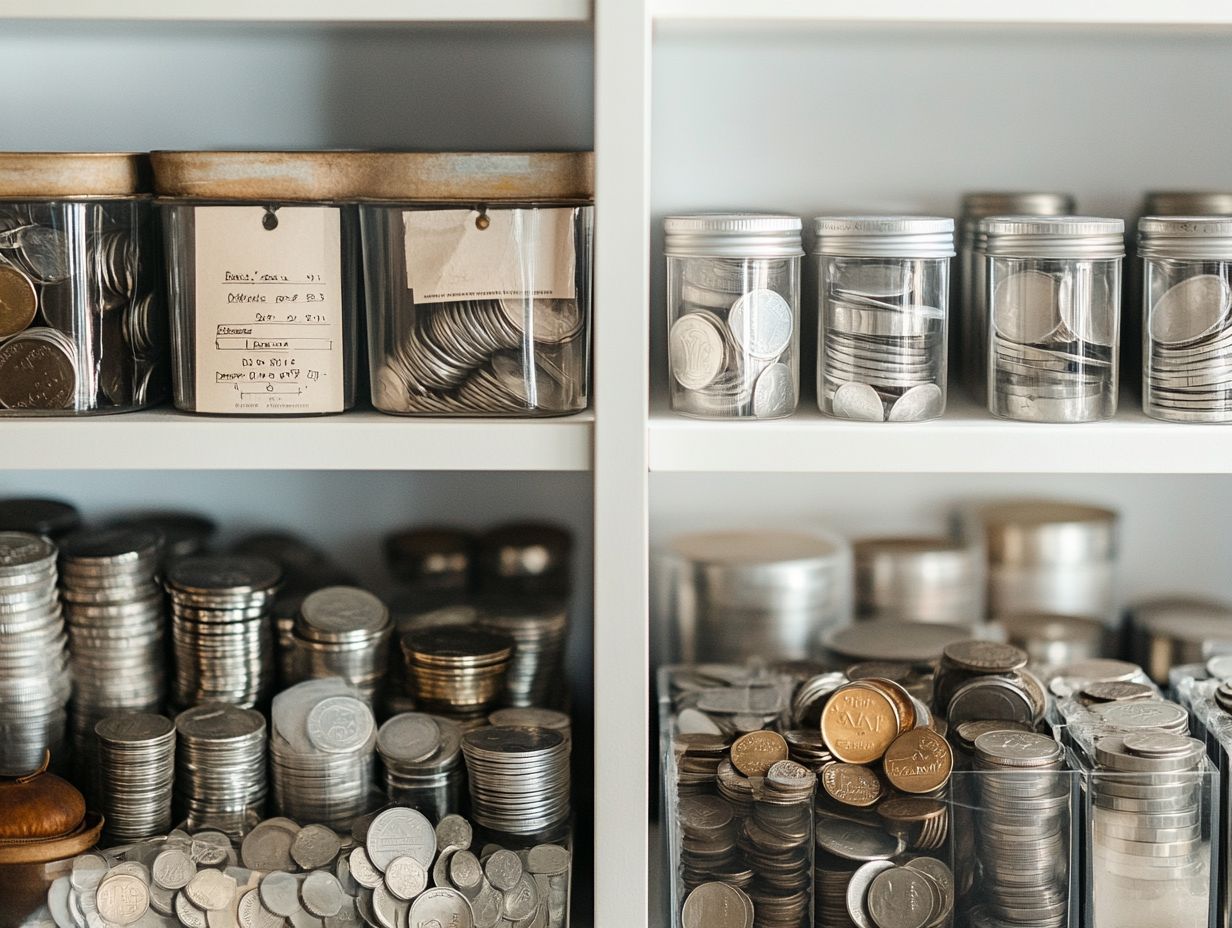
Avoiding exposure to air and light is essential for preserving the silver value of your coins, rounds, and bars. These elements can speed up tarnishing and degradation, ultimately affecting your investment s potential return.
When silver is unprotected, it can react with sulfur compounds in the air, leading to unsightly tarnish that diminishes its luster and visual appeal. Ultraviolet rays from sunlight can also speed up the oxidation process, which accelerates deterioration.
To counteract this, use opaque containers or protective covers. These solutions shield your silver from direct light and create a barrier against airborne contaminants.
By following these practices, you protect your assets and promote the long-term health of your investment portfolio. These steps are vital for anyone engaged in silver stacking.
5. Rotate Your Silver Items
Regularly rotating your silver items is a valuable practice for any silver collector or investor. This simple habit helps maintain their condition and protects them from long-term exposure to damaging factors that could lower their market value.
By occasionally moving or displaying each piece differently, you can significantly reduce the risk of tarnish and scratches that arise from prolonged contact with other items or environmental factors. Adopting a straightforward rotation schedule like switching the position of your items every few months can help preserve their luster.
Using protective storage solutions, such as anti-tarnish cloths and dedicated display cases, will further extend the life of your precious possessions.
If your collection is sizable, consider seasonal rotations. This allows each silver piece to shine while minimizing wear and tear, ensuring your collection remains stunning.
What Are the Best Containers for Long-Term Silver Storage?
Selecting the right containers for long-term silver storage is crucial for safeguarding your investment, whether you’re dealing with silver coins, bullion, or other precious metals from reputable dealers.
Understanding the specific requirements of each type of silver empowers you to make informed decisions about storage solutions. For example, coin holders beautifully showcase individual coins while protecting them from scratches and tarnish. They also allow easy access. On the other hand, vaults offer top-notch security for larger quantities, often featuring advanced locking mechanisms and secure environments.
Bullion boxes, designed specifically for silver bars, stack efficiently and shield your investment from moisture and other environmental threats. By evaluating the unique advantages of each option, you can tailor your storage strategy to maintain your silver’s value over time.
How Do Anti-Tarnish Products Work?
Anti-tarnish products create a barrier that protects your silver from sulfur and other harmful substances in the air, significantly reducing the risk of tarnish and preserving the condition of your silver items.
These products often include specialized chemicals, such as antioxidants and corrosion inhibitors, which bond to silver surfaces. By forming a protective layer, they minimize reactions with environmental factors like humidity and air pollutants.
You ll find a variety of anti-tarnish options available, including:
- Wipes
- Sprays
- Anti-tarnish cloths
Each method offers a different approach to protecting your silver. Effectiveness can vary depending on the formulation and how you apply them. Some products offer long-lasting protection, while others may need more frequent use.
Act now to store your silver with anti-tarnish strips in airtight containers, and wash items regularly with gentle soap to remove any existing tarnish before applying protective products.
What Are the Ideal Conditions for Storing Silver?
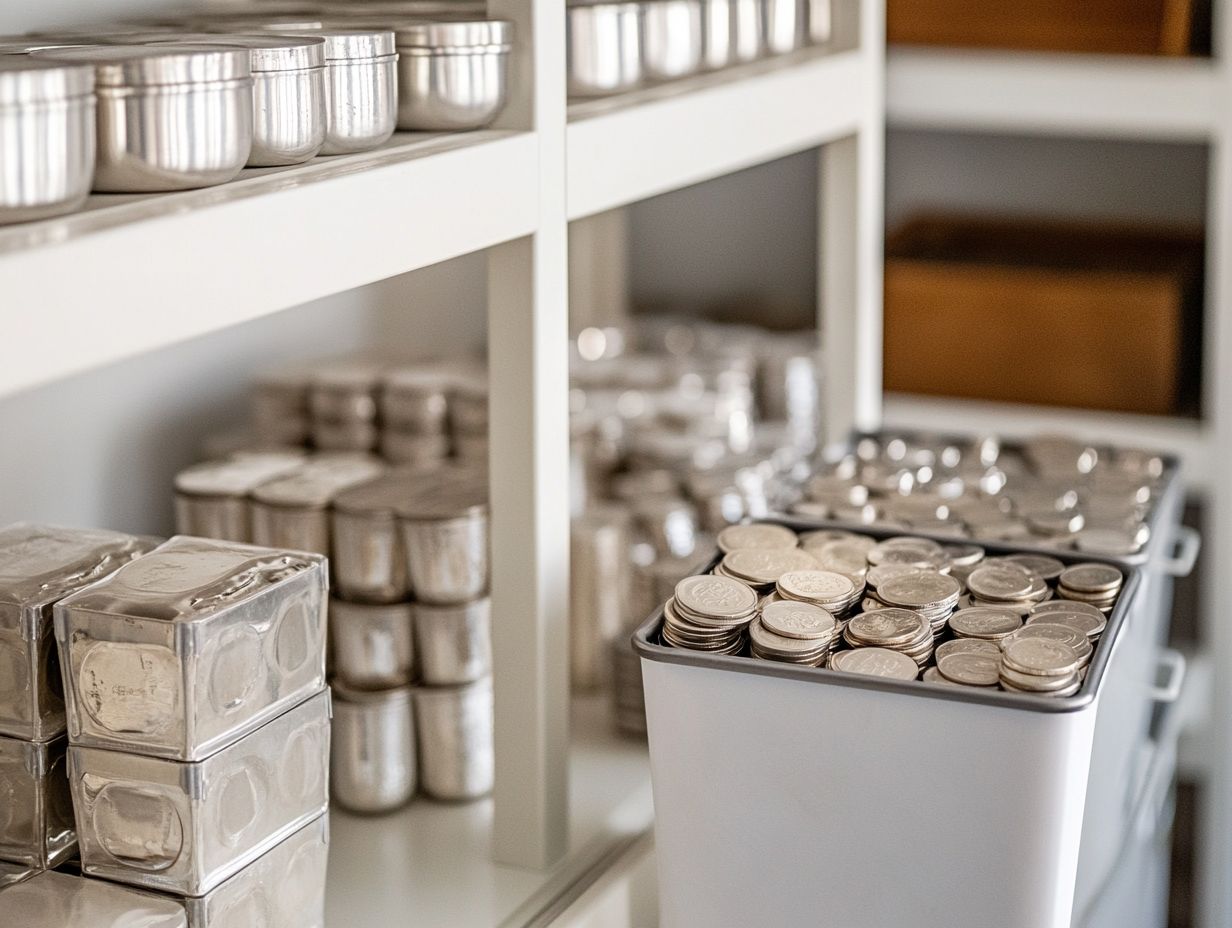
The ideal conditions for storing silver require you to maintain a stable climate that minimizes exposure to humidity and temperature fluctuations. This is crucial for preserving the physical integrity of your precious metals and safeguarding your investment during uncertain economic times.
Keep room temperature between 60 F and 70 F (15 C to 21 C); extreme heat or cold can lead to tarnishing or other forms of damage. Monitor relative humidity levels to stay below 50% to prevent rusting, which can dull your silver’s shine and diminish its value.
Air quality also plays a vital role. Storing your silver in a clean, dust-free environment helps avoid abrasive particles that could scratch its surfaces. Utilizing hygrometers and thermometers enables you to keep a close eye on environmental factors, allowing for timely adjustments.
Why Is Exposure to Air and Light Harmful for Silver?
As a collector or investor, it s vital to understand the risks of exposure to air and light! Exposure can hasten tarnish and diminish your silver’s overall value. When silver encounters atmospheric elements, it undergoes chemical reactions that produce silver sulfide, the compound responsible for tarnish. This reaction is triggered by sulfur compounds in the air. Light exposure, especially from ultraviolet rays, accelerates the tarnishing process.
To safeguard your valuable pieces, consider these practical steps:
- Store silver items in airtight containers
- Use anti-tarnish cloths
- Keep them away from direct sunlight
Regular cleaning with an appropriate silver polish can also help preserve the luster and integrity of your metal treasures.
How Often Should Silver Items Be Rotated?
The frequency of rotating your silver items depends on several factors: the type of silver, its storage conditions, and insights from seasoned collectors who advocate for regular maintenance to ward off tarnishing and wear.
For example, sterling silver, with its higher purity level, may require more frequent attention than plated items, as it tarnishes more easily. Experts typically suggest rotating your silver pieces at least every three to six months, especially if they re tucked away in enclosed spaces with limited air circulation.
If your silver is subjected to humidity or fluctuating temperatures, consider shortening those intervals to prevent potential damage. For silver displayed in open areas, make it a habit to dust regularly and inspect for signs of tarnish, ensuring it retains its radiant appearance for years to come.
Frequently Asked Questions
What are the best ways to store silver for the long-term?
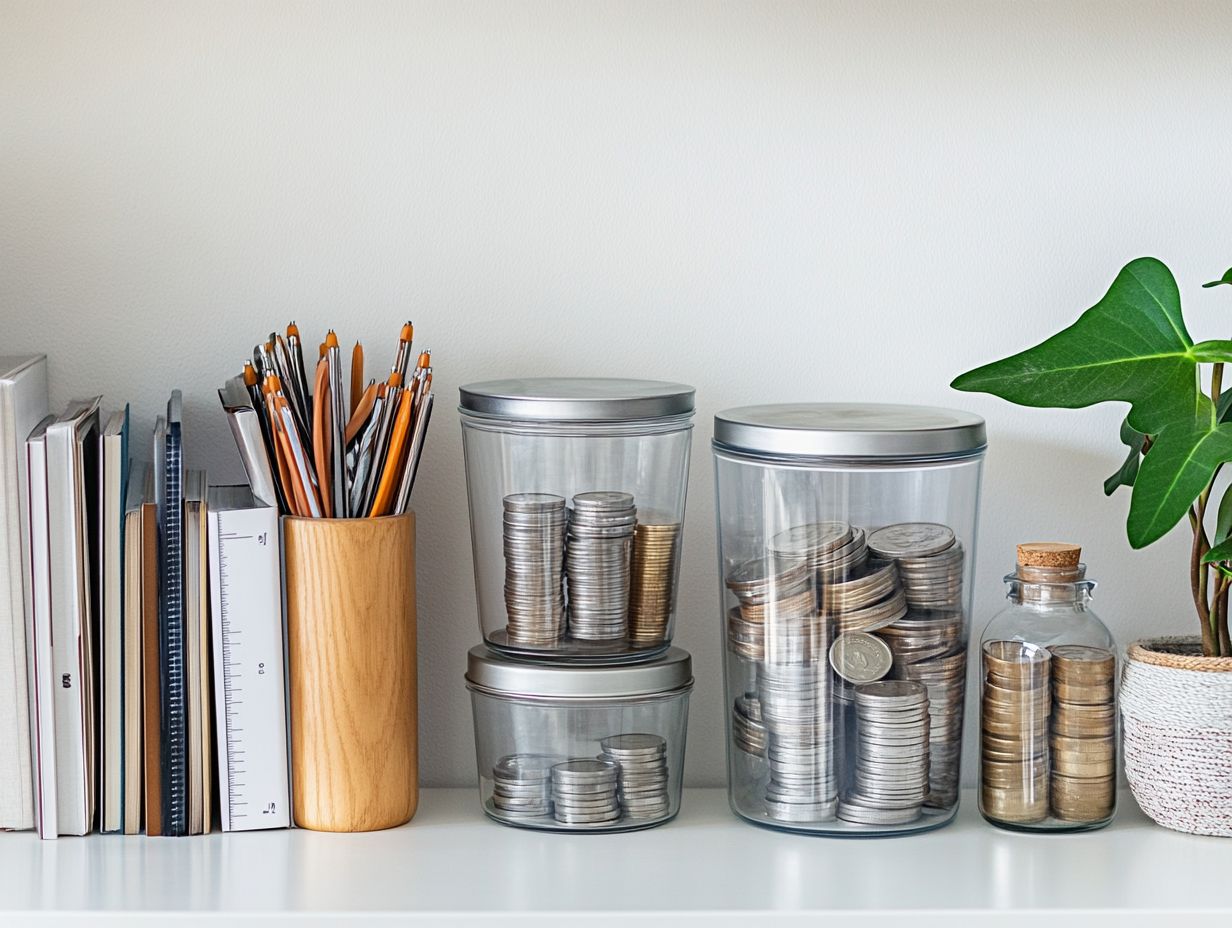
1. Use airtight containers: Airtight containers, such as plastic bags or vacuum-sealed bags, prevent moisture and air from reaching your silver, keeping it safe from tarnishing.
2. Consider a safe or safety deposit box: For added security, invest in a safe or rent a safety deposit box at a bank to store your silver.
3. Use anti-tarnish products: Products like anti-tarnish strips or silica gel packets absorb moisture and prevent tarnishing.
4. Store in a cool, dry place: Heat and humidity speed up tarnishing, so store your silver in a cool, dry location.
5. Avoid handling with bare hands: The oils from your skin can leave marks on silver; handle it with gloves or a soft cloth.
How often should I check on my silver when it’s in storage?
It’s recommended to check on your silver every 6-12 months. This allows you to inspect for signs of tarnishing or damage and take necessary steps to prevent further harm.
Don’t wait! Start protecting your silver today for a brilliant future!
Is it necessary to clean my silver before storing it?
Yes, clean your silver before long-term storage. Dirt or residue can cause tarnishing and damage over time. Use a gentle cleaner made specifically for silver.
Can I store my silver with other metals or items?
Storing silver with other metals is a no-go! Especially avoid items that contain sulfur, as they can tarnish your silver quickly. Store it separately for the best results.
What should I do if I notice tarnishing on my silver in storage?
If you see tarnishing, take your silver out and gently clean it with a silver polish, which is a special cleaner for silver items. After cleaning, store it properly to prevent further tarnishing.
Is there anything else I should consider when storing silver for the long-term?
Think about insurance and documentation when storing your silver. Get your silver appraised, insured, and keep a detailed record of your collection.










